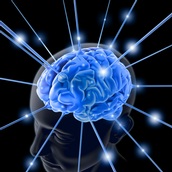Breakthrough by scientists discovers the early trigger that can lead to dementia

Research from Cambridge University’s Department of Chemistry has established the nature of malfunction in protein molecules that triggers Alzheimer’s disease.
Scientists have discovered a catalytic trigger, which causes the death of neurons in the brain and leads to the onset of Alzheimer’s disease, occurring when the fundamental structure of a protein molecule changes in the brain.
The study marks a milestone in the long term research established in Cambridge after Professor Christopher Dobson first discovered the connection with the disease and the underlying nature of protein ‘misfolding’.
Dr Tuomas Knowles, lead author of the study and long-time collaborator of Professor Dobson, said: “There are no disease modifying therapies for Alzheimer’s and dementia at the moment, only limited treatment for symptoms. We have to solve what happens at the molecular level before we can progress and have real impact.”
Researchers have been able to map in detail the pathway that generates the ‘aberrant’ forms of proteins which cause neurodegenerative conditions such as Alzheimer’s for the first time ever.
With research from the Alzheimer’s Research Trust showing that in 2010 dementia cost the UK economy over £23bn, it is hoped that this breakthrough will improve capabilities to improve earlier diagnosis of neurological disorders such as Alzheimer’s and Parkinson’s.
The crucial breakthrough has come one week after Prime Minister David Cameron urged scientists and clinicians to work together to ‘improve treatments and find scientific breakthroughs’ to address ‘one of the biggest social and healthcare challenges we face'.
Scientists claim that a new generation of drugs could be created to target the earliest stages of the development of Alzheimer’s that they have discovered and could play a central role in diagnostic and drug development for dementia related diseases.
Dr Knowles continued: “We are essentially using physical and chemical methods to address a biomolecular problem, mapping out the networks of processes and dominant mechanisms to ‘recreate the crime scene’ at the molecular root of Alzheimer’s disease.
“Increasingly, using quantitative experimental tools and rigorous theoretical analysis to understand complex biological processes are leading to exciting and game-changing results. With a disease like Alzheimer’s, you have to intervene in a highly specific manner to prevent the formation of the toxic agents. Now we’ve found how the oligomers are created, we know what process we need to turn off.”
The neurodegenerative process leading to diseases such as Alzheimer’s is triggered when the normal structures of protein molecules within cells become corrupted.
Dr Knowles continued: “We’ve now established the pathway that shows how the toxic species that cause cell death, the oligomers, are formed. This is the key pathway to detect, target and intervene – the molecular catalyst that underlies the pathology.”
Professor Dobson and his colleagues say the years spent developing research techniques are paying off now, and they are starting to solve the key mysteries connected with these neurodegenerative diseases.
Latest News
 29-Jul-24
Dementia Bus gives carehome.co.uk staff insight into life with dementia
29-Jul-24
Dementia Bus gives carehome.co.uk staff insight into life with dementia
 01-Mar-24
Find out the top care homes in 2024
01-Mar-24
Find out the top care homes in 2024
 21-Mar-23
UK's top care homes in 2023 revealed
21-Mar-23
UK's top care homes in 2023 revealed
 03-Jan-23
carehome.co.uk launches free care helpline
03-Jan-23
carehome.co.uk launches free care helpline
 13-Dec-22
5 mins with Emily Whitehurst, chief operating officer for Constantia Healthcare
13-Dec-22
5 mins with Emily Whitehurst, chief operating officer for Constantia Healthcare